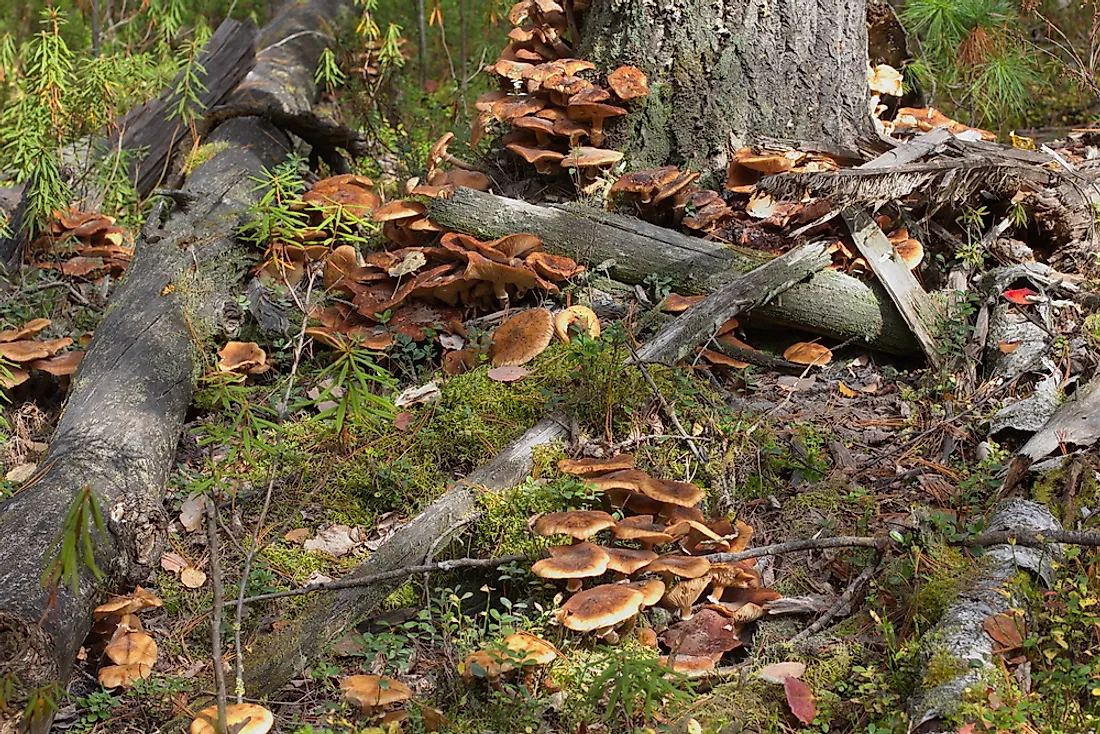What Is The World's Largest Living Organism?

The largest living thing on Earth is not the blue whale or the elephant and is actually much different from what you would expect. This is because the world's largest organism just happens to mostly be hidden from sight. The Armillaria ostoyae is a type of fungus that lives above ground in hardwood and coniferous forests. It is also the world's biggest and most expansive living organisms.
Armillaria ostoyae attacks the barks of trees and travels for miles between trees. In 1988, scientists first discovered a single specimen that had spread 8.8 square kilometers and was estimated to be around 2,400 years old in Malheur National Forest, Oregon. Aptly named the "Humongous Fungus", this growth is considered to be the largest living organism on Earth.
Armillaria ostoyae
A pathogenic fungus, Armillaria ostoyae is commonly found in the western and northern parts of the US growing commonly in the conifer wood and hardwood forests of cascade crest. Scientists agree that if set cells are identical, genetical, and can communicate together they can be classified as a single organism. The Armillaria Ostoyae grows in bulk and spreads out underground without notice of visibility on the ground. In autumn, the fungus blooms as honey mushrooms. The fungus thrives in the Oregon forests due to the high number of nutrients from the decaying matter and less competition with other organisms.
Characteristics and Survival
Armillaria ostoyae is parasitic in nature and feeds by attaching themselves to the roots of the trees via filaments that tangle together and leak digestive enzymes from the trees, eventually killing them. Due to the availability of nutrients, the fungus produces spores to the ground that are white spotted, spread over the ground by wind and other agents such as water similar spores of same family mate producing small cords that obtain nutrients to grow until it matures to produce other spores and the lifecycle continues over and over again.
Effects of Armillaria ostoyae
Armillaria ostoyae has several effects both to humans and on the environment as it is pathogenic to forest trees and poisonous whenever consumed by humans as food. The effect on the environment is identified by trees drying, the oozing of resin from their stems, patches with the distress of tree cones, and also the presence of their mushroom heads on tree bases. Measures of environmental control are taken to curb this hazard by use of chemicals to kill the mushrooms on trees, uprooting affected trees, and the planting of resistant species of trees to diversify the ecological balance preventing parasitic encroachment, insect manifestation, and spread.











